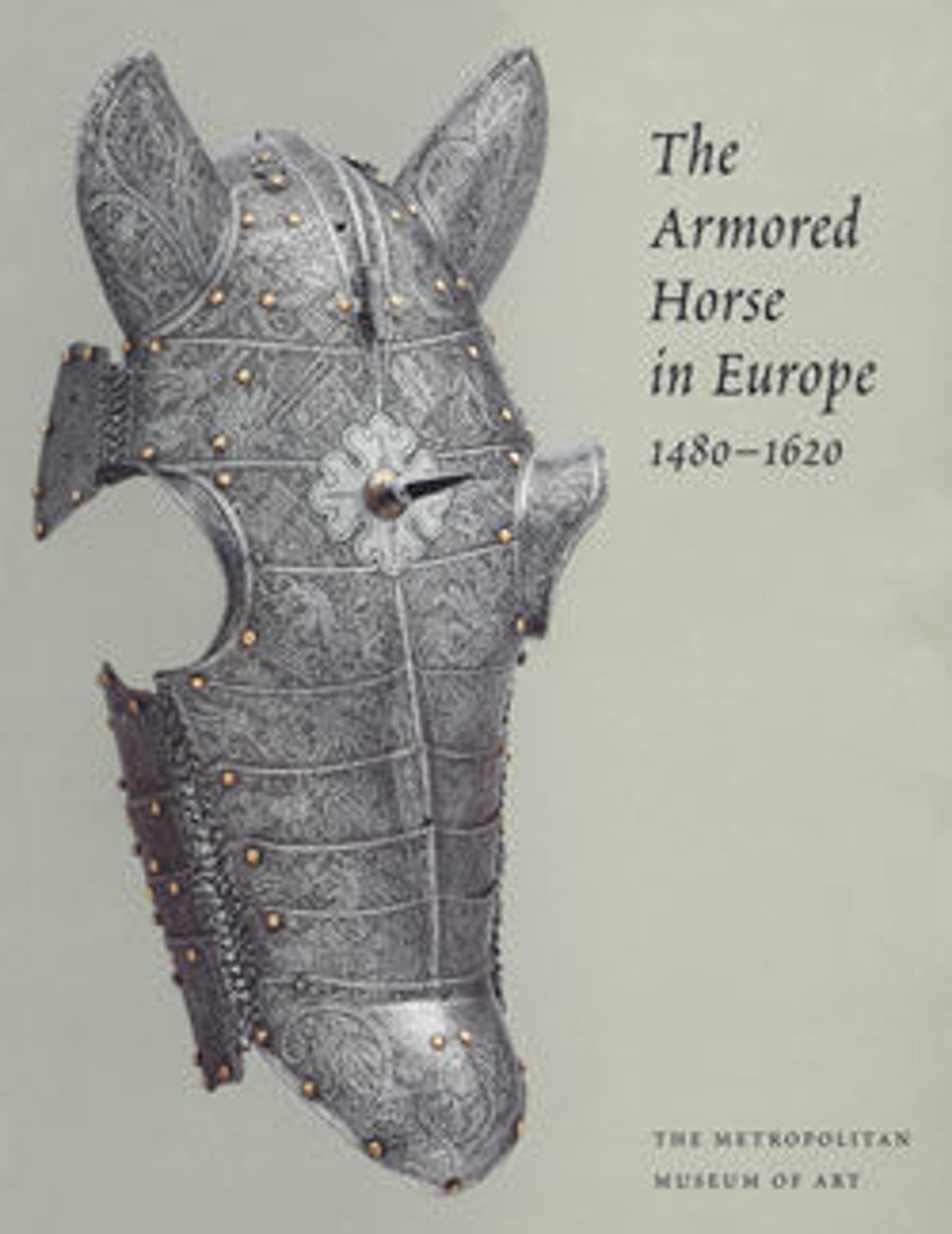Pommel Plate
While many saddle steels have some degree of embossed ornament, very few include figural representations or narrative scenes. The densely detailed style of the embossed, chiseled, and gilt decoration of this pommel plate is a notable exception, and one that allows it to be identified as belonging to a small group of rare parade armors made in France or Flanders in the last quarter of the sixteenth century. Particuarly close in style to this piece are another pommel plate in the Wallace Collection, London (A424), a pair of full leg defenses in the Museo Stibbert, Florence (1021), and an incomplete half-armor with a close helmet and arm defenses in the Deutsches Historisches Museum, Berlin (1022). All share the same highly idiosyncratic style of rendering human figures, horses, trees, and landscapes, which are spread over the entire surface of the plates, gilded overall, and lacking any of the ornamental borders or cartouches that usually surround decoration of this type. The subjects depicted are derived from classical history and mythology. At the center of this pommel plate there is a prominent figure, wearing antique-style armor and mounted on a rearing horse, who possibly represents the legend of the Roman hero Marcus Curtius.
Artwork Details
- Title: Pommel Plate
- Date: ca. 1580
- Culture: French or Flemish
- Medium: Steel, gold
- Dimensions: 8 3/4 x 7 in. (22.2 x 17.8 cm); Wt. 12 oz. (352 g)
- Classification: Equestrian Equipment-Saddles
- Credit Line: Rogers Fund, 1929
- Object Number: 29.171
- Curatorial Department: Arms and Armor
More Artwork
Research Resources
The Met provides unparalleled resources for research and welcomes an international community of students and scholars. The Met's Open Access API is where creators and researchers can connect to the The Met collection. Open Access data and public domain images are available for unrestricted commercial and noncommercial use without permission or fee.
To request images under copyright and other restrictions, please use this Image Request form.
Feedback
We continue to research and examine historical and cultural context for objects in The Met collection. If you have comments or questions about this object record, please contact us using the form below. The Museum looks forward to receiving your comments.
